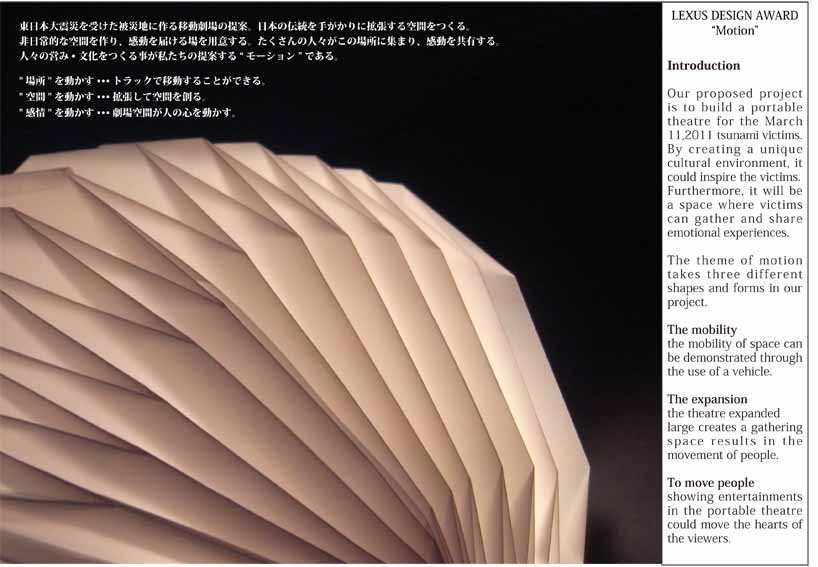
the portable theatre using japanese tradition for tsunami victims by YusukeYamamoto from japan
designer's own words:
Introduction(1P)
Our proposed project is to build a portable theatre for the March 11,2011 tsunami victims.
By creating a unique cultural environment, it could inspire the victims.
Furthermore, it will be a space where victims can gather and share emotional experiences.
The theme of motion takes three different shapes and forms in our project.
The mobility
the mobility of space can be demonstrated through the use of a vehicle.
The expansion
the theatre expanded large creates a gathering space results in the movement of people.
To move people
showing entertainments in the portable theatre could move the hearts of the viewers.
東日本大震災を受けた被災地に作る移動劇場の提案。日本の伝統を手がかりに拡張する空間をつくる。
非日常的な空間を作り、感動を届ける場を用意する。たくさんの人々がこの場所に集まり、感動を共有する。
人々の営み•文化をつくる事が私たちの提案する“モーション”である。
"場所"を動かす•••トラックで移動することができる。
"空間"を動かす•••拡張して空間を創る。
"感情"を動かす•••劇場空間が人の心を動かす。
Bringing Mobility to an Immobile Area(2P)
Why create a portable theatre, you may ask. The tsunami has left the victims immobile (e.g. blocked roads, lost cars). Since the devastation, many of the victims have lived in isolation, or have stayed indoors for long periods of time in temporary housing. Having lost family, friends, and their homes, they have also lost motivation to go outdoors and start over new. We want to create an opportunity for these victims to get out, meet new people, create new relations, and have fun.
移動劇場は、トラックで運ぶ事が出来る。
なぜ、今、移動劇場が必要なのか。
被災地には、お年寄りをはじめ、外に出る事が困難で仮設住宅に籠りがちな人々がいる。そういった人々が外にでるキッカケを作りたいと思っている。
Using Japanese Tradition(3P)
Traditionally, the Japanese have used screens in their homes called‘byo-bu’. Byo-bu is normally used as partitions or walls, creating
smaller rooms from larger space.
However, by using material that allows light to filter through, it can also change the brightness of the room. Not only can a folded screen be used to change space, but it can also be used to alter sound and lighting.
日本には“屏風”という伝統的な家具がある。屏風は、部屋の仕切りに用いられ、
必要なときに、運び出し大間から小間を創り出す機能を持つ。
一枚の折りたたまれた板が一つの空間を完全に分節するのではなく、
音や光などの要素を共有しつつ、空間を緩やかに隔てている。
通常、“屏風”は壁として使われる物であるが、空間全体を覆い、光を透過する素材を使う事で
新しい“濃度”を持った空間を作り出す事が出来るのではないだろうか。
Structure(4P)
A thin sheet or wall will barely stand on its own; however giving the sheet folds will strengthen the walls and give it structure.
一枚では自立できない薄い膜が、折り込まれることで構造を形成する。
被災地の日常とは切り離された空間を創り出す。
How to Build(5P)
By inserting air into the interior, the structure will automatically inflate and set up on its own.
Much like origami (Japanese paper folding), the pre-prepared creases will make it easy to assemble and disassemble the theatre.
この移動劇場は、空気を注入して膨らむ二重膜構造として構想している。
折り紙の様に折り目をいれた膜は、容易に折り畳む事ができる。
Use(6P)
Similar to byo-bu, the theatre will help divide daily-use and non daily-use.
屏風のように折り込むことで作られた移動劇場は“日常”と“非日常”を仕切る。
Introduction 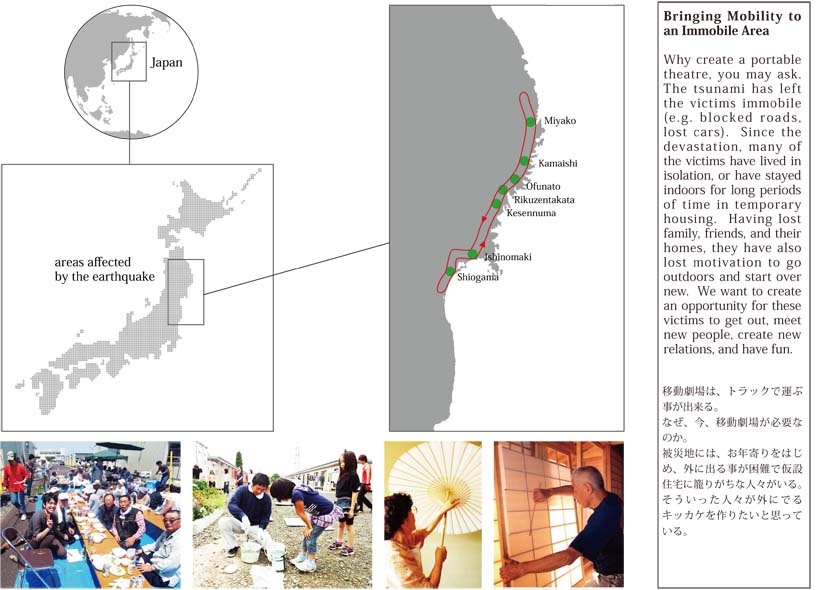 Bringing Mobility to an Immobile Area
Bringing Mobility to an Immobile Area 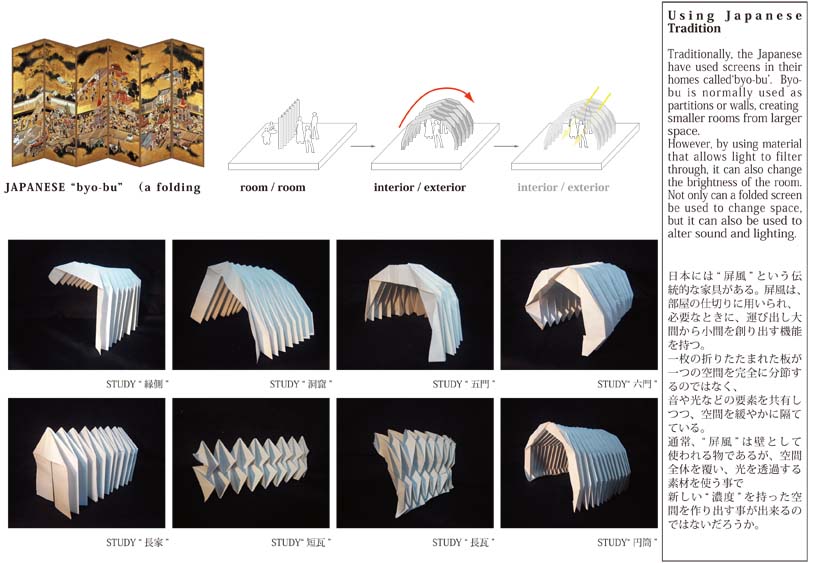 Using Japanese Tradition
Using Japanese Tradition 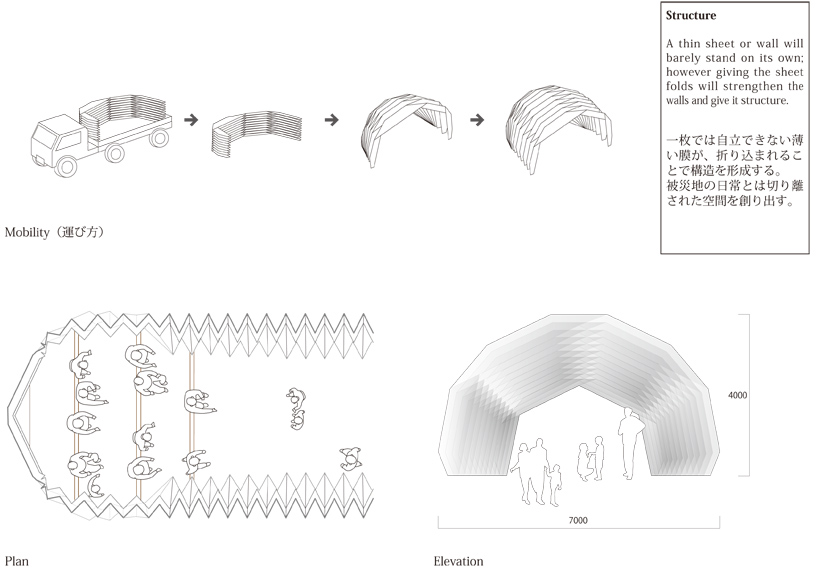 Structure
Structure 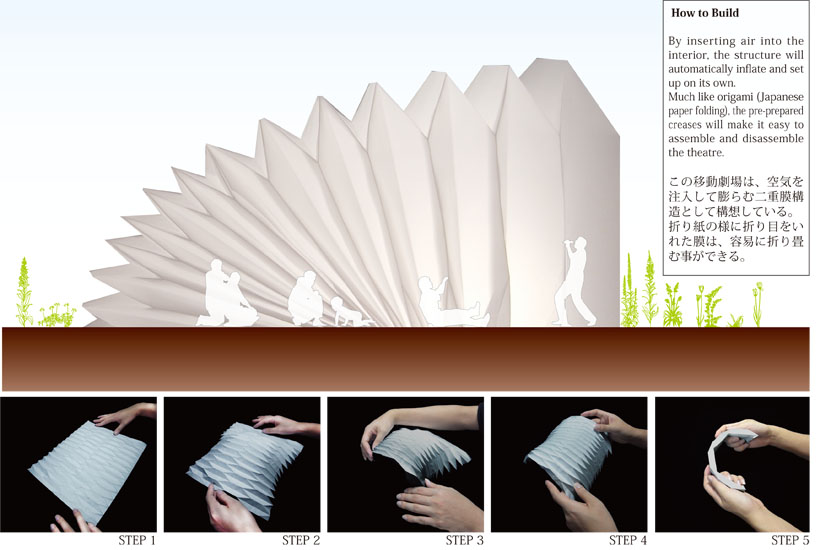 How to Build
How to Build 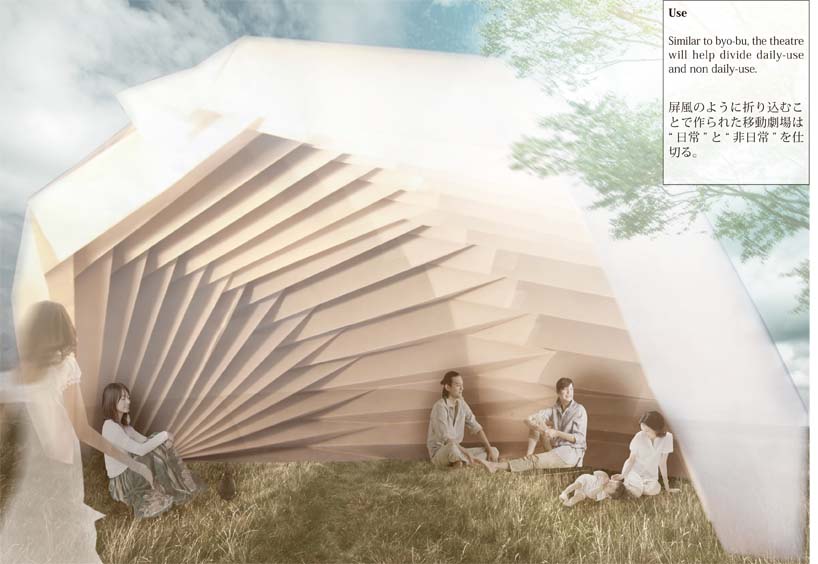 Use
Use